WW2 veteran leads Guinea Pig Club memorial plan
- Published
Who were the men of the Guinea Pig Club?
A member of a group of World War Two pilots who underwent pioneering plastic surgery has begun a campaign for a permanent tribute to the airmen.
Sandy Saunders suffered 40% burns after a plane crash during an RAF flight.
He was sent to Sir Archibald McIndoe, who tried out treatments on his "guinea pigs" because he had no book or guide to refer to.
Now Mr Saunders wants help to fund a memorial to the so-called Guinea Pig Club.

Sir Archibald McIndoe was forced to perform treatments on the "guinea pigs" as he had no books or guides to refer to
Mr Saunders, 93, from Leicestershire, is one of 18 surviving members of the Guinea Pig Club, which was set up as a drinking club for patients at Queen Victoria Hospital, East Grinstead, west Sussex, by Sir Archibald in July 1941.
Many of the 649 members fought in the Battle of Britain, although many were from Canada, Australia, America and eastern Europe.
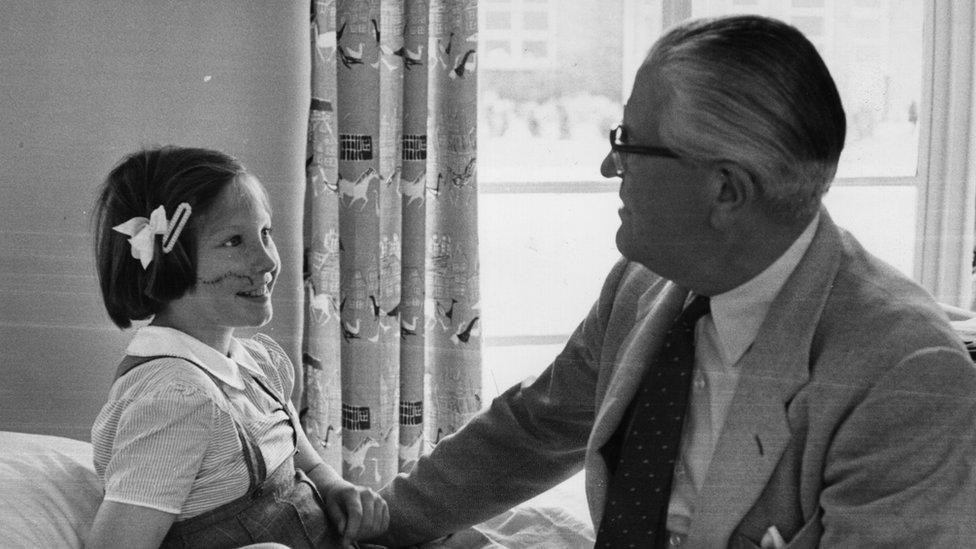
Sir Archibald was the president of the society, which was formed in 1941 as a drinking club

Sandy Saunders was inspired to become a GP after watching Sir Archibald operate
Mr Saunders, who was treated by Sir Archibald in 1945, sustained severe burns to his face, legs and hands after escaping from a burning cockpit moments before losing consciousness. The aircraft's navigator was killed in the same crash.
After waking up in hospital, Mr Saunders, who was 22 at the time, had "eight or nine" operations before he was sent to Sir Archibald.
At the time, he was having problems closing his eyes as his skin grafts had shrunk.
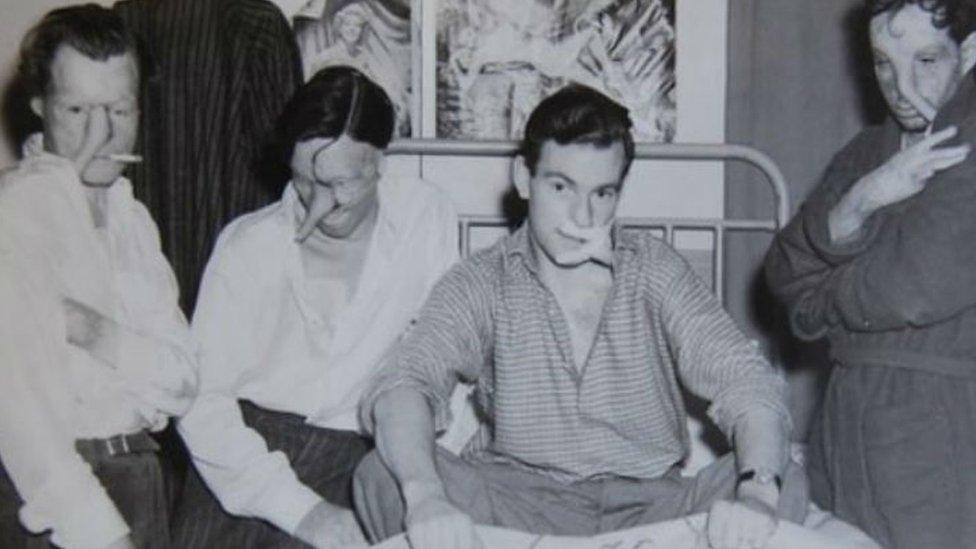
Of the 649 members, 57% were British, 27% were Canadian, 8% were from New Zealand and 8% were from Australia
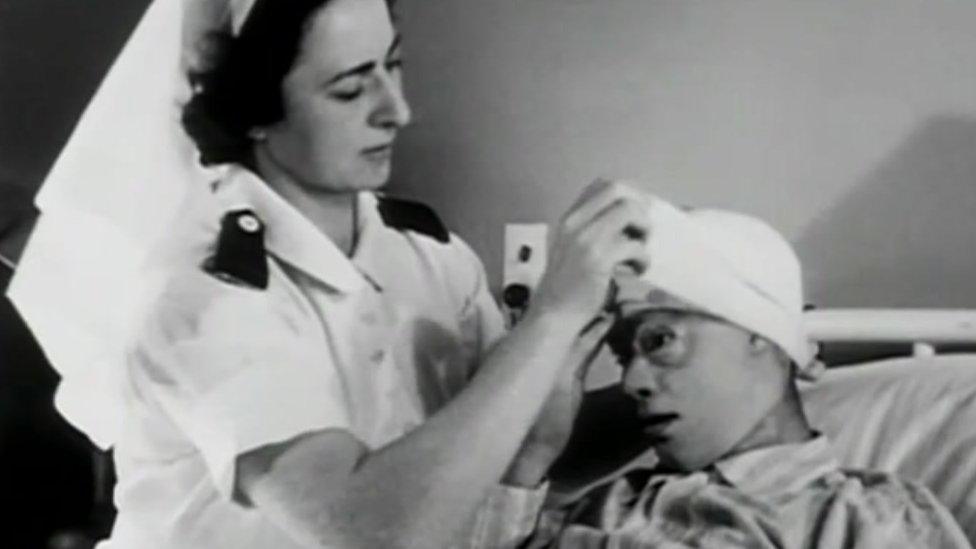
Mr Saunders said Sir Archibald treated the mind as well as the body
Mr Saunders said before the war, people with extensive burns usually died or were left disfigured.
"It's no picnic to have operation after operation," he said.
"The first time I saw my face, which was about two or three months after my burns had healed sufficiently, I was quite shocked and very depressed.
"McIndoe was very keen to restore people not only to an acceptable appearance, but also to be psychologically sound."
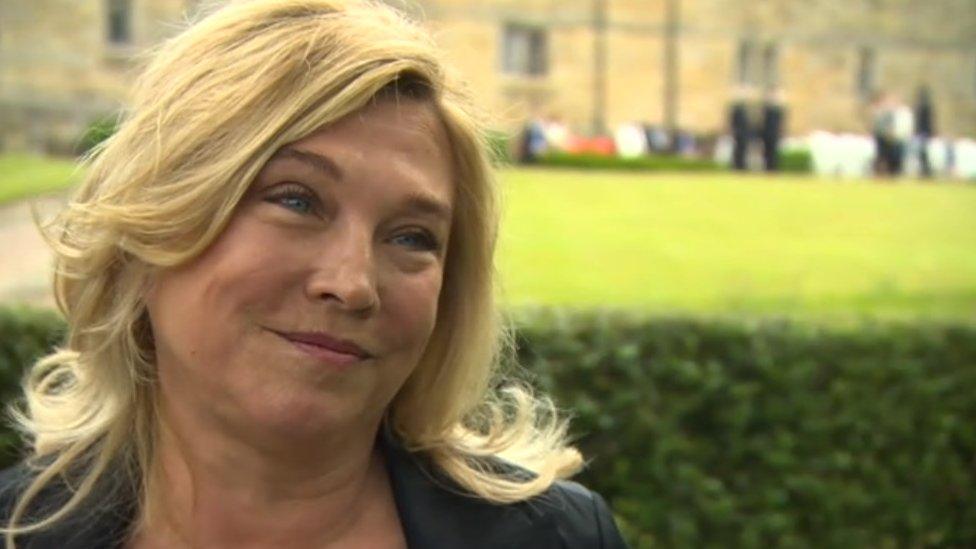
Actress Amanda Redman, who was treated at the McIndoe surgical centre after being left with burns as a baby, is to make a film about the surgeon's life
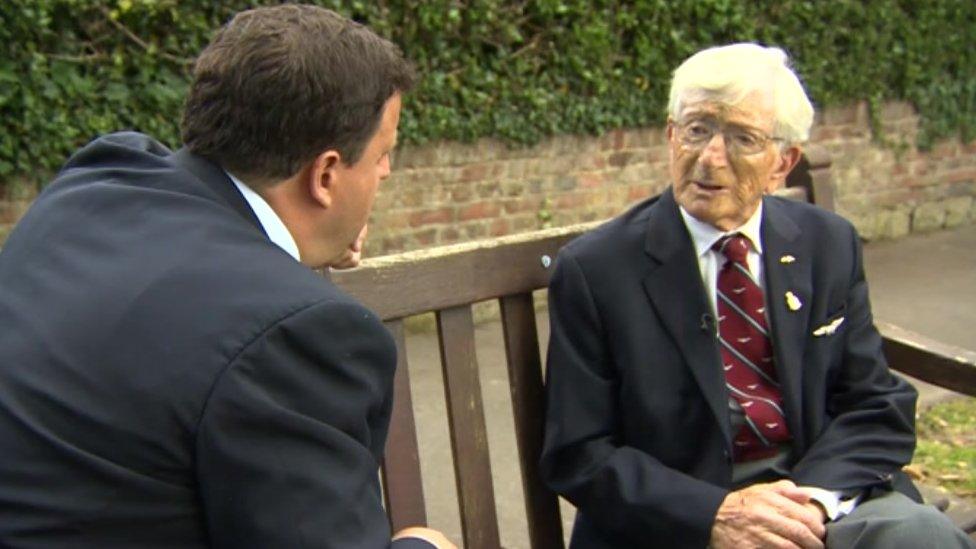
Mr Saunders is seeking help to erect a £20,000 memorial in tribute to the club, which he regards as "an important organisation in the nation's war history"
Mr Saunders, who was inspired to become a GP after watching Sir Archibald operate, has planned the construction of a £20,000 memorial at the National Arboretum in Staffordshire.
A crowdfunding page has been set up to help finance the memorial, which will be unveiled in November.
The monument will be a vertical panel of stone, with an inscription of the history of the club.
Mr Saunders hopes to have a QR code embedded in the stone so people can scan it on phones or tablets to read the names of the 649 members.
"The camaraderie of all of the members runs very deeply in me, as does my appreciation for the work of the surgeon," he said.
"I regard the club as an important organisation in the nation's war history."
- Published9 June 2014

- Published5 April 2013

- Published2 June 2011
